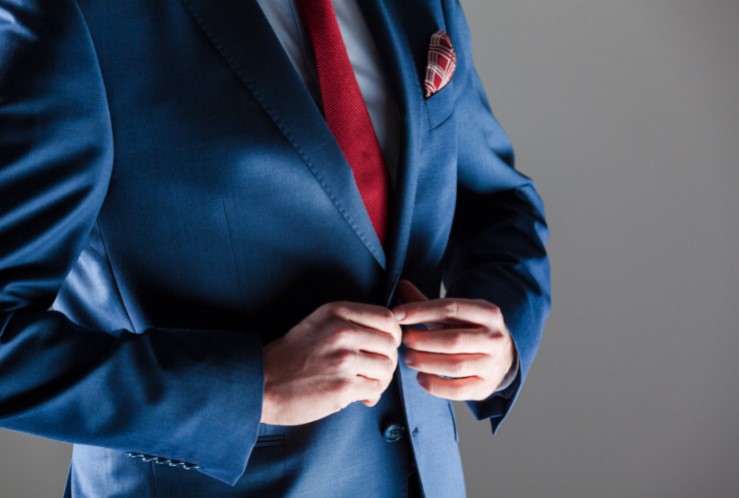
There’s a lot to take into account when you’re getting ready for the office, the job interview, the evening event, or your wedding. What is the right suit? What shoes go with that suit? How should your hair look? Should you shave or rock the beard? And, of course, what ties go with which moment?
Not to add to it, but neckties are more than just an afterthought for the outfit. What tie color you wear actually sends a message to all of those around you. A red tie psychologically impacts those you interact with; a brown tie sends an entirely different message. Not to worry, we broke it down so you can easily choose which tie you should go with when you have a specific outcome you’re looking to achieve.
Red ties
Just like there is a four-legged stool for the four tailored items every man should have in their closet, there are a handful of ties every man should own as well. A red tie is at the top of the list. They call it a power tie because that’s what it does. It evokes strength, passion, and dominance.
There is a reason almost every president to ever wear a necktie has, at one point or another, opted to go with a red necktie. It shows confidence and authority. Anytime you wear a red tie, it tells everyone around you that you mean business… or that you’re in charge.
If you want to soften the impact that the red has and evoke more leadership and less dominance, opt for a muted burgundy tie in place of the bright red one. As for the suit, there are few suits that red ties won’t work with, but the most common and best fits are navy, charcoal, and light gray.

Blue ties
Ever wonder why politicians also go with blue as much as red? Well, it is simple — they want you to trust them. The blue tie conveys trust, stability, calmness, and confidence. That makes it an excellent choice for a salesman or client-facing position. If you have a room that you need to calm down (say, a stockholder’s meeting during a down quarter), blue is the way to go.
Just like the red tie, it’s part of the four must-haves and carries the same alternative as a navy tie to soften the impact it has on those around you. When you’re wearing navy ties, it’s best to stay away from the black suit. But other than that, feel free to rock the tie in blue/navy with every other suit you have.

Yellow/gold ties
You know how the assistant store manager is usually easier to talk to and easier to go to than the store manager? That is pretty much the point of the yellow tie. Where the red tie is the power tie and conveys strength and dominance, the yellow tie is the more approachable brother. Because of this, many experts believe that this is the perfect tie for job interviews.
The thing to keep in mind with the yellow tie is that it doesn’t always translate as well to a formal evening event. When wearing this tie after 6 p.m., opt for a gold option instead. Either of those color choices goes very well with your basic colored suits (black, charcoal, blue, and gray), but give the earth tones (brown, tan, and olive) a deeper look and complement them well.

Green ties
We may have felt the need to give you some ways to wear green on St. Patrick’s Day without losing your sense of style, but that doesn’t mean that green isn’t a great color for your wardrobe, especially your ties. A green tie conveys practicality, reliability, knowledge, wisdom, wealth, and growth while giving you a down-to-earth aura. That means it is perfect if you are training new people or starting a new job in management.
Wearing green can be a little tricky if you want to wear a blue suit. While a brighter green can be a little more playful and energetic, it battles a little with a navy suit, so it’s best to stick to a charcoal or a light suit like tan and light gray. If you want to wear a navy suit with green, opt for sage green ties, as their softer green hue and dusty color play well with others.
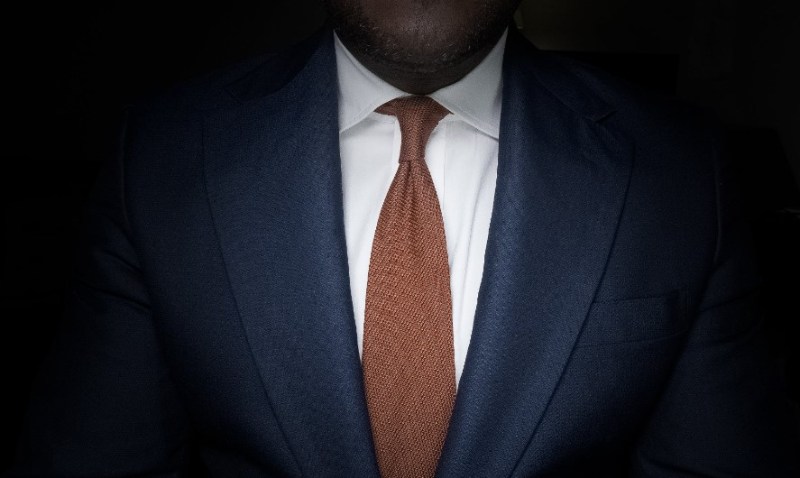
Orange ties
Want a surprise you didn’t see coming? The orange tie is probably going to be where you have the most fun. It’s a bit of a wildcard on the scale of tie colors. Bright orange shades play the same way as a red power tie, while the deeper colors give the navy and gold feeling of stability and confidence.
This tie color plays exceptionally well with the tans and browns. It goes very well with the gray scale (charcoal to light), and you won’t find many other color combinations as attractive as orange and blue. The olive suit is the only color suit you will need a little more intention in pairing. The darker and more muted tones play better with olive suits, as the brighter colors may end up making you look like Aquaman.
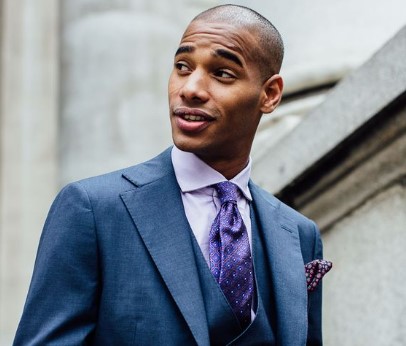
Purple ties
The truth is that purple may not be your first choice when wearing a tie, but it should be. Back in the old days, Julius Caesar decreed that the color purple was reserved for the elites of Rome. The natural purple dye, called “Tyrian purple,” was extracted from a predatory sea snail, murex brandaris, and was very expensive and labor intensive to produce. It took the color-bearing glandular mucus of 12,000 snails to make just 1.4 grams of the pure dye — just enough to dye the trim of one garment. Now, the purple evokes wealth and luxury, conveying status.
The purple tie looks excellent at the office with navy and charcoal suits. But with a tan suit, you’re set for Easter Sunday or any other special occasion — a light gray suit firmly places you as the best dressed at any summer wedding.
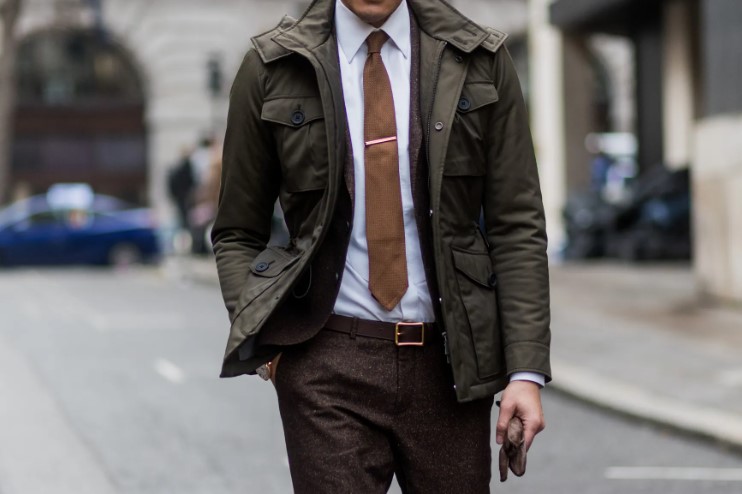
Brown ties
Not everyone is the boss. Not everyone is a leader. But that doesn’t mean you don’t need to worry about the message you send with the tie you wear. A brown tie shows practicality and dependability. This tells your boss that you are a reliable employee and they can count on you to get the job done.
Of course, your brown tie will look great with earth tones like brown, tan, and olive suits, and your blue and navy suits are perfect for the office. The charcoal suit is workable, but it does best if your brown tie closely matches the brown leather of your shoes and belt. Like most other areas of menswear, avoid wearing brown with black and leave that black suit in the closet.
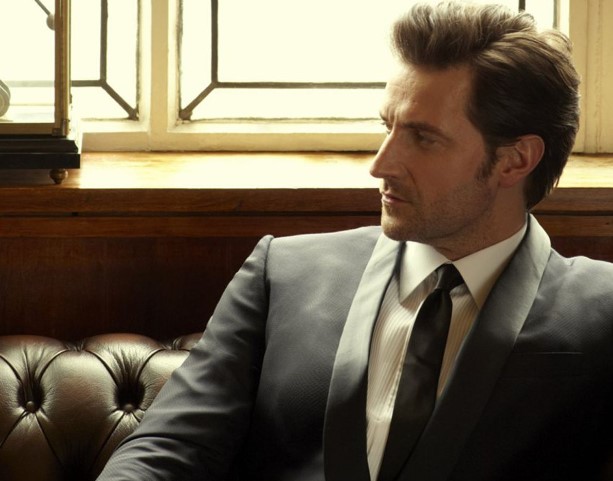
Black ties
The black tie is and should always be reserved for after 6 p.m. formal events. They look too formal for the office and go best with black suits or even tuxedos. But if you want to try to wear a black tie at a time that isn’t formal, opt for a more casual knit tie with a button-down collar.
There you have it. Now that you’re armed with the knowledge that your tie is speaking for you before you open your mouth, you can open doors with nothing but silk and body language. Take this list and stock up on your tie collection so you can speak even if you’re at a loss for words.



